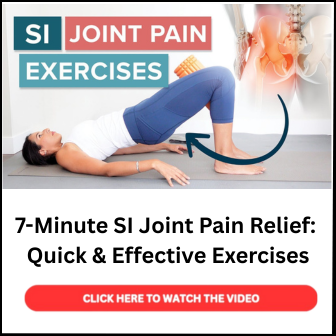7 Exercises To Reduce Joint Pain Naturally (Simple & Effective!)
Joint pain is a common problem that affects millions of people worldwide, regardless of age. Whether caused by aging, injury, arthritis, or repetitive strain, joint discomfort can limit mobility and significantly reduce the quality of life.
7 Exercises To Reduce Joint Pain | Relieve Joint Pain at Home [2025]
While medication and physical therapy are often recommended, incorporating gentle yet effective exercises into your daily routine can provide substantial relief.
At Sport and Medical Sciences, we understand how important it is to manage joint health through holistic and sustainable methods. In this guide, we’ll explore 7 proven exercises to reduce joint pain, improve flexibility, strengthen surrounding muscles, and enhance overall mobility.
Understanding Joint Pain
Joint pain typically involves discomfort, aches, or soreness in any of the body’s joints. It may be caused by:
- Osteoarthritis: The most common form of arthritis, involving wear-and-tear of cartilage.
- Rheumatoid arthritis: An autoimmune condition causing inflammation in joints.
- Gout: A metabolic disorder that results in intense joint pain, usually in the big toe.
- Injuries: Sprains, strains, or ligament tears.
- Overuse: Repetitive motions causing stress and inflammation.
Movement and exercise are vital to maintain joint function, reduce stiffness, and prevent further deterioration.
Why Exercise Helps with Joint Pain
Contrary to popular belief, the right kind of exercise can actually ease joint pain. Here’s how:
- Strengthens Muscles: Supporting muscles around joints helps reduce stress on them.
- Improves Flexibility: Increases range of motion and prevents stiffness.
- Boosts Circulation: Enhances nutrient delivery to joint tissues.
- Promotes Weight Loss: Reducing excess weight decreases joint pressure, especially in the knees and hips.
- Triggers Endorphins: Natural painkillers released during physical activity.
Consistency is key. Aim for at least 3 to 5 sessions per week, focusing on low-impact exercises.
7 Exercises To Reduce Joint Pain
Here are the top 7 exercises you can incorporate into your weekly routine. Each targets joint mobility, muscle strength, and flexibility while being gentle on the joints.
1. Swimming and Water Aerobics
Best for: Knees, hips, shoulders, and spine
Why it works: Water reduces the impact on joints while offering natural resistance. Swimming and water aerobics allow you to exercise the full body without stressing joints.
How to do it:
- Try swimming laps or joining a water aerobics class.
- Aim for 30 minutes, 3 times a week.
- Include a variety of strokes to engage different muscle groups.
Pro tip: Warm water pools can help relax joints and reduce inflammation further.
2. Yoga
Best for: Spine, hips, knees, wrists, and shoulders
Why it works: Yoga improves flexibility, strength, balance, and mental well-being. Certain poses specifically relieve joint tension and promote alignment.
How to do it:
- Start with beginner-friendly poses like Cat-Cow, Child’s Pose, and Downward Dog.
- Practice 20-30 minutes daily or join a class 2-3 times a week.
Pro tip: Use props like blocks or straps for support and avoid over-stretching.
3. Cycling (Stationary or Outdoor)
Best for: Knees, hips, and ankles
Why it works: Cycling strengthens the lower body muscles without putting much pressure on the joints. It enhances knee mobility and supports overall cardiovascular health.
How to do it:
- Ride a stationary or regular bike for 20-40 minutes.
- Maintain a moderate, steady pace.
- Avoid uphill riding or high-resistance pedaling if joints are inflamed.
Pro tip: Use a properly fitted bike to prevent unnecessary joint strain.
4. Tai Chi
Best for: Knees, ankles, hips, and spine
Why it works: This ancient Chinese martial art involves slow, flowing movements that increase balance, flexibility, and mental focus. It’s excellent for joint lubrication and alignment.
How to do it:
- Start with basic movements or a beginner class.
- Practice 20-30 minutes daily.
- Focus on controlled breathing and gentle transitions.
Pro tip: Tai Chi can double as a mindfulness practice, reducing stress-induced inflammation.
5. Resistance Band Workouts
Best for: Shoulders, knees, hips, and wrists
Why it works: Using resistance bands helps build muscle around the joints, offering better stability and reducing strain. It’s low-impact and customizable to different fitness levels.
How to do it:
- Choose light to moderate resistance bands.
- Perform exercises like seated leg presses, shoulder raises, or bicep curls.
- Aim for 2-3 sets of 10-15 reps per exercise.
Pro tip: Focus on controlled, slow movements to avoid jerking motions.
6. Walking
Best for: Hips, knees, ankles, and lower back
Why it works: Walking is one of the simplest and most effective ways to maintain joint flexibility and cardiovascular health.
How to do it:
- Walk for 30 minutes, 5 days a week.
- Choose flat, even terrain.
- Wear cushioned, supportive footwear.
Pro tip: Break up longer walks into shorter sessions throughout the day if needed.
7. Stretching and Mobility Drills
Best for: All joints
Why it works: Stretching improves joint range of motion, reduces stiffness, and prepares your body for other exercises.
How to do it:
- Incorporate dynamic stretches before workouts (e.g., leg swings, arm circles).
- Use static stretches post-workout (e.g., hamstring stretch, quad stretch).
- Hold each static stretch for 20-30 seconds.
Pro tip: Never stretch cold muscles—do a light warm-up first.
Tips for Safe and Effective Joint Exercise
- Start slow: Ease into new routines to avoid injury.
- Stay consistent: Regular movement is more beneficial than occasional high-intensity activity.
- Use proper form: Poor alignment can increase joint stress.
- Listen to your body: Mild discomfort is okay, but stop if you feel sharp pain.
- Consult a professional: Especially if you have chronic conditions like arthritis.
When to Seek Medical Attention
If joint pain persists despite regular exercise or worsens over time, consult a healthcare provider. Red flags include:
- Sudden swelling
- Inability to move the joint
- Severe pain after mild activity
- Signs of infection (redness, heat, fever)
Early intervention can prevent further joint damage.
Final Thoughts
Exercise is a powerful, natural way to combat joint pain. These 7 exercises offer a balance of strength, flexibility, and low-impact movement to keep your joints healthy and pain-free. Remember, the goal isn’t just pain relief, but enhancing your mobility and overall quality of life.
At Sport and Medical Sciences, we advocate a proactive, educated approach to joint care. Pair these exercises with a balanced diet, adequate hydration, and stress management techniques for best results.
References
- Arthritis Foundation – https://www.arthritis.org
- Mayo Clinic – https://www.mayoclinic.org
- National Institute of Arthritis and Musculoskeletal and Skin Diseases – https://www.niams.nih.gov
- American College of Rheumatology – https://www.rheumatology.org
- Harvard Health Publishing – https://www.health.harvard.edu
- Centers for Disease Control and Prevention (CDC) – https://www.cdc.gov
- American Physical Therapy Association – https://www.apta.org
.




